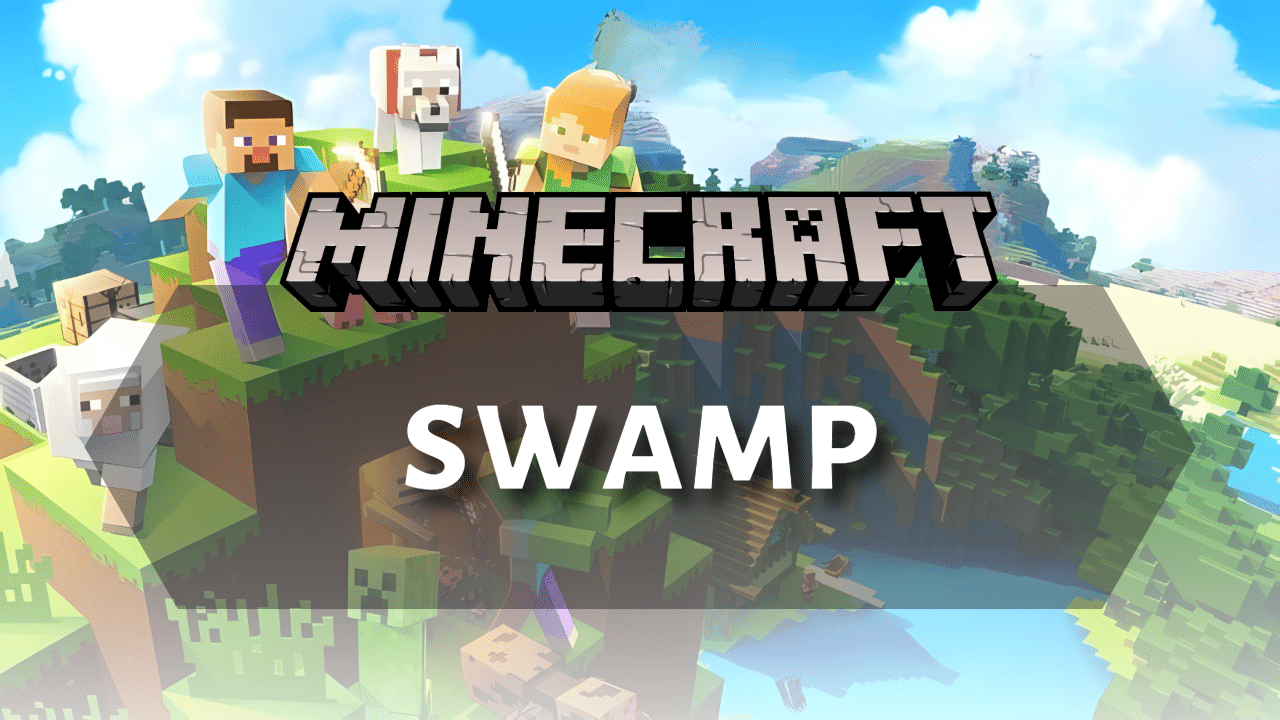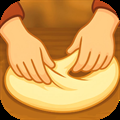
Introduction
The swamp biome in Minecraft Bedrock Edition is a waterlogged area characterized by unique flora, fauna, and structures. In Bedrock Edition, there are two main types of swamp biomes to explore: the regular Swamp and the warmer Mangrove Swamp. Each offers distinct features and resources for players to discover. This Minecraft Bedrock Swamp Guide will walk you through what you need to know to navigate and thrive in these murky environments in Minecraft Bedrock Edition.
Finding Swamp Biomes
Regular swamp biomes are typically found in flat terrain near sea level in regions with high erosion and can be found in many temperature clusters, except snowy regions. They will often replace rivers in these areas and do not directly border the ocean. Mangrove swamp biomes, on the other hand, are a warmer equivalent and are likely to appear around deserts and jungles. You may want to explore areas near savannas, forests, and other warm biomes to find them. Alternatively, you can use the /locate biome minecraft:swamp command or /locate biome minecraft:mangrove_swamp to get the coordinates of the nearest swamp of each type. You can then travel to these coordinates or teleport using the /tp @s command.
Regular Swamp Biome
The regular swamp biome in Bedrock Edition is defined by its murky brown water and many small islands separated by vast canals of water. Lily pads exclusively dot the surfaces of the waters. The shores can be irregular with small puddles. You will find sparse oak trees that can grow on land or in shallow water, often with vines. Mushrooms are more common here than in most Overworld biomes. Sugar cane can frequently be found growing on the shores. In Bedrock Edition, huge mushrooms can also generate on the islands. The grass and leaves in this biome have varying tints of green. Underwater fog is thick, reducing visibility.
Mangrove Swamp Biome
Mangrove Swamp Biome
The mangrove swamp is a warmer variant of the swamp biome. Its floor is mainly composed of mud blocks with occasional patches of grass and dirt. This biome is dominated by mangrove trees, which have distinctive, wide roots that grow both above and below water. Mangrove trees are composed of mangrove logs, leaves, roots, muddy roots, and propagules, and they can have vines and moss carpets growing on them. The water in the mangrove swamp is teal in color. Lily pads and seagrass can also be found here. Unlike regular swamps in Bedrock Edition, huge mushrooms and swamp huts do not generate in mangrove swamps.
Resources in Swamps
In Minecraft’s swamp biomes, several distinctive resources can be found, each offering unique benefits and uses.
Clay
Abundant in the shallow waters of regular swamp biomes, clay is typically found forming the bed of these water bodies. Players can harvest clay blocks and smelt them to produce bricks, which are essential for crafting brick blocks and flower pots. Additionally, clay can be used to create decorative terracotta blocks, adding aesthetic value to builds.
Lily Pads
Floating atop the water surfaces in swamp biomes, lily pads serve both decorative and functional purposes. They can be collected and placed to create walkable paths over water, facilitating easier navigation. Their aesthetic appeal also makes them a popular choice for enhancing garden and pond designs within player constructions.
Oak Trees and Vines
Swamp biomes are characterized by oak trees draped with vines. Harvesting oak logs provides a reliable source of wood for crafting and building, while vines can be collected using shears. Vines are particularly useful for decorative purposes and can be used to craft mossy stone bricks, adding a weathered look to structures.
Mushrooms
Both red and brown mushrooms proliferate in the damp environment of swamps. These fungi are crucial for crafting mushroom stew, a nourishing food source. Additionally, they can be used to create fermented spider eyes, an ingredient in various potions, making them valuable for players interested in brewing.
Sugar Cane
Commonly found along the water’s edge in swamp biomes, sugar cane is a vital resource for crafting paper and sugar. Paper is essential for creating maps, books, and fireworks, while sugar is used in potion brewing and crafting cakes, adding both functional and culinary benefits to players.
Blue Orchids
Unique to swamp biomes, blue orchids are vibrant flowers that can be used to produce light blue dye. This dye is valuable for coloring wool, glass, and other materials, allowing players to customize their creations with a distinct hue.
Seagrass
Growing in the water bodies of swamps, seagrass can be harvested and used to breed turtles, facilitating the farming of turtle shells. These shells can be crafted into helmets that provide the Water Breathing effect, enhancing underwater exploration capabilities.
Mangrove Wood
Exclusive to mangrove swamp biomes, mangrove trees offer a unique reddish-brown wood. This wood can be harvested and crafted into various items, including planks, doors, and boats, providing aesthetic diversity for construction projects.
Mud Block
Predominantly covering the floor of mangrove swamps, mud blocks can be harvested and used directly as building materials. They can also be crafted into packed mud by combining them with wheat, which can then be further crafted into mud bricks for construction purposes.
Mangrove Propagule
Hanging from the leaves of mangrove trees, propagules can be collected and planted to grow new mangrove trees. This allows players to cultivate their own mangrove wood supply, facilitating sustainable resource management.
Bee Nest
Occasionally found within mangrove trees, bee nests house bees that can be harvested for honey and honeycomb. These resources are essential for crafting beehives, candles, and honey blocks, adding both functional and decorative elements to player creations.
These resources make swamp and mangrove swamp biomes rich in materials that support diverse crafting and building endeavors in Minecraft.
Structures in Swamps
Swamp Hut
In the murky expanses of Minecraft’s regular swamp biomes, players may encounter the elusive swamp hut, commonly referred to as a witch hut. These modest structures are constructed primarily from spruce planks and are elevated above the swampy terrain on oak log stilts, preventing water ingress. The huts feature a small external platform serving as an entrance; however, they lack stairs or ladders, requiring players to build their own means of access.
Inside, the swamp hut’s compact interior includes a crafting table and a flower pot containing a red mushroom, adding a touch of homely decor. In the Bedrock Edition, the cauldron may contain a randomly generated potion, offering potential rewards for those who dare to intrude. However, these huts are not abandoned—each is inhabited by a witch, a hostile mob proficient in potion-based attacks, ready to defend her domicile against unwelcome visitors. Additionally, a black cat resides within, which can be tamed by players seeking a feline companion.
Strategically, swamp huts present both opportunities and challenges. The resident witch provides a renewable source of valuable drops such as redstone, glowstone dust, and various potions, while the black cat offers a unique taming opportunity. However, the constant threat posed by the witch, coupled with the hut’s precarious location in hostile swamp environments, means that players must approach with caution and preparation. Transforming a swamp hut into a personal base requires careful planning to mitigate these dangers and to secure the benefits these distinctive structures offer.
Mobs in Swamps
In the swamp and mangrove swamp biomes of Minecraft Bedrock Edition, players can encounter a variety of unique mobs, each contributing to the distinctive ecosystem of these areas. Below is a detailed overview of these creatures:
Frogs
These passive amphibians are native to both swamp types. In mangrove swamps, you’ll find the warm variant, characterized by their white coloration. Frogs are known for their ability to attack small slimes and magma cubes, yielding slime balls and froglights upon defeat. They can be bred using slimeballs, leading to the production of tadpoles, which mature into frogs.
Tropical Fish
Exclusive to mangrove swamp biomes, tropical fish add vibrant life to the aquatic environment. These colorful creatures swim in the shallow waters, enhancing the biome’s visual appeal. While primarily decorative, they can be captured using buckets for aquarium displays or used as a food source.
Slimes
Slimes are hostile mobs that spawn in both swamp variants, predominantly at night between Y-levels 50 and 70. Their spawn rates are influenced by the moon phase, with higher occurrences during full moons. When defeated, slimes split into smaller versions and eventually drop slimeballs, which are valuable for crafting items like leads and sticky pistons.
Glow Squids
These luminescent aquatic creatures inhabit the waters of both swamp types, typically spawning in complete darkness. Glow squids emit a subtle glow, making them a captivating sight in the murky waters. Upon defeat, they drop glow ink sacs, which can be used to craft illuminated text on signs.
Witch
In regular swamp biomes, witches can be found residing in swamp huts. These hostile mobs utilize potions to heal themselves and to harm players, making them formidable opponents. Defeating witches can yield valuable drops such as redstone, glowstone dust, and various potions.
Black Cat
Each swamp hut in regular swamps is home to a black cat. These feline companions are unique to the swamp biome and can be tamed by players using raw fish. Once tamed, they offer companionship and can ward off creepers.
General Hostile Mobs
Both swamp types are susceptible to the spawning of common hostile mobs such as creepers, skeletons, zombies, zombie villagers, spiders, and endermen, especially during nighttime. Players should remain vigilant and ensure adequate lighting to mitigate the risks posed by these creatures.
Understanding the behaviors and characteristics of these mobs is essential for players aiming to navigate and thrive in Minecraft’s swamp and mangrove swamp biomes.
Swamp Survival and Exploration Tips
Swamps—both regular and mangrove—pose unique challenges and opportunities. Here’s how to thrive in these watery, mob-filled biomes:
General Tips for All Swamps
Regular Swamp Highlights
Mangrove Swamp Highlights
Conclusion
In conclusion, both the regular swamp and mangrove swamp biomes offer unique experiences in Minecraft. While both are waterlogged and share features like slimes and frogs, they have distinct characteristics. The regular swamp has murky gray-green water, lily pads, blue orchids, and swamp huts with witches. It’s a good source of clay and is now home to the bogged.
The mangrove swamp is a warmer variant, often near deserts and jungles, and is defined by mangrove trees that provide reddish-brown wood. It’s rich in mud, which can be turned into clay or crafted into packed mud and mud bricks. The dense forests with their above-ground roots and muddy ground present navigation challenges, and players can also find warm frogs and tropical fish.
Mastering these biomes requires understanding their resources, mobs, and best ways to navigate their landscapes. Whether you’re after the resources of a regular swamp or exploring the mangrove swamp’s muddy terrain, both provide rewarding experiences in Minecraft.
If you’re looking for more guides, be sure to explore the website for more tips and tricks. Enjoy your adventure, and happy mining!
Frequently Asked Questions(FAQs)
🍄How do I get slimeballs in a swamp?
Hunt slimes at night during a full moon in slime-spawning chunks. Swamps are the easiest natural spot.
🍄Can I build in swamps easily?
Yes, but expect lots of water and uneven ground. It’s great for witch or slime farms.
🍄Do swamps have unique structures?
Only witch huts, but these can be rare and useful for potion ingredient farming.













